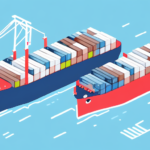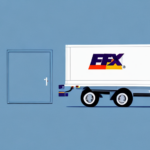Understanding Delivery Costs Per Mile
In today's modern world, businesses of all sizes rely heavily on distribution networks to transport goods and products to customers. With the rise of e-commerce and global markets, reliable and cost-effective delivery is more important than ever. But how much does delivery cost per mile? And what factors contribute to the final price tag? In this article, we'll break down the different components of delivery costs and provide you with essential advice to optimize your distribution strategy and save money.
The Importance of Knowing Delivery Costs
Understanding and tracking delivery costs is crucial for several reasons:
- Financial Impact: Delivery costs can significantly affect your bottom line, especially if you're operating on tight margins. Knowing the cost per mile allows you to price your products appropriately and ensure profitability.
- Optimizing Logistics: A clear picture of delivery expenses helps optimize your shipping and logistics strategy, leading to faster delivery times and increased customer satisfaction.
- Cost Reduction: By analyzing delivery costs, you can identify expensive routes or carriers, negotiate better rates, or switch to more cost-effective options.
According to the 2023 International Shipping Report, businesses can reduce delivery costs by up to 15% through strategic route planning and carrier negotiations.
Key Factors Influencing Delivery Costs Per Mile
Package Weight and Dimensions
Most carriers use a volumetric weight formula to calculate shipping costs, taking into account both the size and weight of your package. Bulky items such as furniture or large appliances may incur higher shipping costs due to their size, even if they aren't particularly heavy.
Delivery Distance and Location
The distance between the origin and destination is a major factor. Shipping to rural or remote areas often results in higher costs due to longer travel distances and fewer delivery options. Additionally, international shipments may face additional fees like customs duties and taxes.
Delivery Speed and Service Level
Expedited or same-day delivery services come with higher price tags compared to standard delivery options. Specialized services, such as white-glove delivery or temperature-controlled shipping, can also increase costs.
Carrier Rates and Fuel Surcharges
Carriers set their rates based on various factors, including fuel prices. Fluctuations in fuel costs can lead to changes in delivery charges. As of 2023, fuel prices have seen a 10% increase, directly impacting shipping costs (Bureau of Labor Statistics).
Packaging Materials and Handling Fees
The type of packaging used can affect both the weight and size of the shipment, influencing the overall cost. Additionally, handling fees for fragile or oversized items can add to the total expense.
Comparing Shipping Options: Ground vs. Expedited
Ground Shipping
Ground shipping is often slower but more cost-effective, especially for domestic deliveries. It is suitable for non-urgent shipments and typically offers lower rates compared to expedited services.
Expedited Shipping
Expedited shipping options, such as overnight or two-day delivery, cater to urgent shipments but come at a higher cost. These services are ideal for time-sensitive deliveries where speed is a priority.
It's essential to balance the need for speed with cost considerations. For example, studies show that businesses can save up to 20% by opting for ground shipping when expedited delivery isn't necessary.
Strategies to Optimize Delivery Costs
Consolidate Shipments
Combining multiple orders into a single shipment can reduce overall shipping frequency and costs. This approach minimizes handling fees and takes advantage of bulk shipping discounts.
Minimize Packaging
Using smaller, lighter packaging materials not only reduces weight-based charges but also lowers dimensional weight costs. Opt for eco-friendly packaging solutions to enhance sustainability.
Negotiate with Carriers
Leveraging your shipping volume to negotiate better rates with carriers can lead to significant savings. Exploring alternative carriers may also uncover more competitive pricing.
Outsource Logistics
Partnering with third-party logistics providers can streamline shipping operations and provide access to discounted carrier rates, ultimately reducing delivery costs.
Implement Real-Time Tracking
Utilizing real-time tracking systems helps identify inefficiencies in the delivery process, allowing for timely adjustments and improved operational efficiency.
Negotiating with Carriers for Better Rates
Provide Detailed Shipping Information
Be prepared to share comprehensive data about your shipping volumes, destinations, and package specifications. This information enables carriers to offer more accurate and competitive rates.
Shop Around
Comparing rates from multiple carriers ensures you secure the best possible deal. Don't hesitate to explore lesser-known carriers that might offer better rates for your specific needs.
Commit to Long-Term Contracts
Carriers are more likely to offer discounted rates for businesses willing to commit to long-term shipping agreements. This commitment benefits both parties by providing stability and predictable costs.
Seek Volume Discounts
High-volume shippers can negotiate substantial discounts. Emphasize your shipping volume during negotiations to unlock lower per-mile rates.
The Role of Technology and Sustainability in Delivery Costs
Advanced Shipping Software
Modern shipping software utilizes machine learning algorithms and predictive modeling to accurately estimate delivery costs based on package specifications and destinations. These tools streamline the shipping process and enhance cost efficiency.
Automation and Real-Time Analytics
Automation tools can handle repetitive tasks, reducing manual errors and improving operational efficiency. Real-time analytics provide actionable insights, enabling businesses to optimize their shipping strategies dynamically.
Sustainable Shipping Practices
Adopting eco-friendly packaging and partnering with carriers that prioritize sustainability can reduce environmental impact and potentially lower costs through green incentives. According to EPA reports, sustainable practices can lead to long-term cost savings and enhanced brand reputation.
Conclusion: Balancing Quality and Affordability in Your Shipping Strategy
Understanding how much delivery costs per mile is essential for optimizing your shipping strategy. By evaluating factors such as package weight and dimensions, delivery distance, and service level, you can choose the most cost-effective shipping options for your business. Additionally, negotiating rates with carriers and leveraging volume discounts can help you reduce costs and increase profitability. Embracing technology and sustainable practices further enhances efficiency and aligns your business with environmental standards. Ultimately, the goal is to find a balance between quality and affordability in your shipping strategy, ensuring that your packages arrive on time, intact, and at a reasonable cost.




















